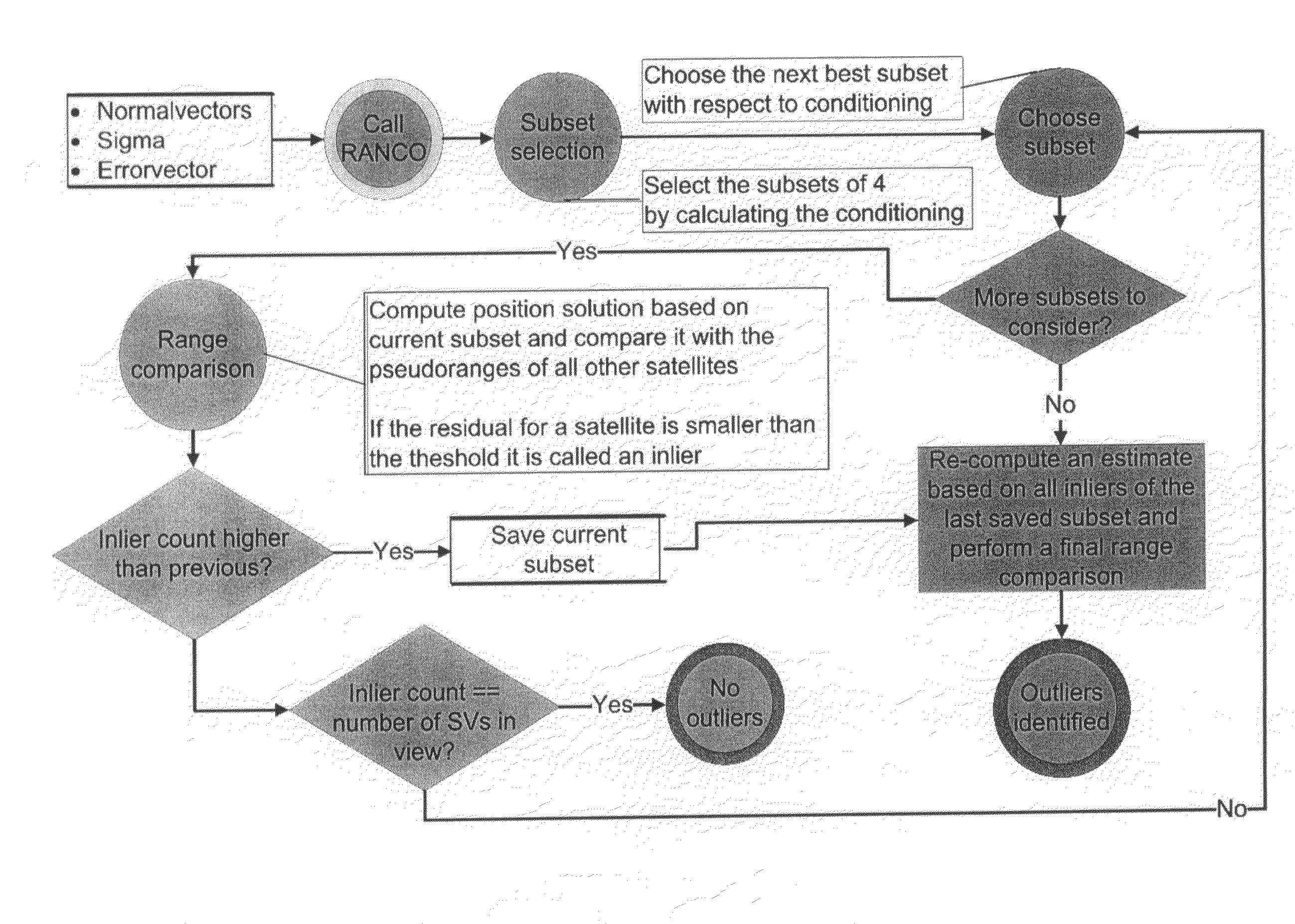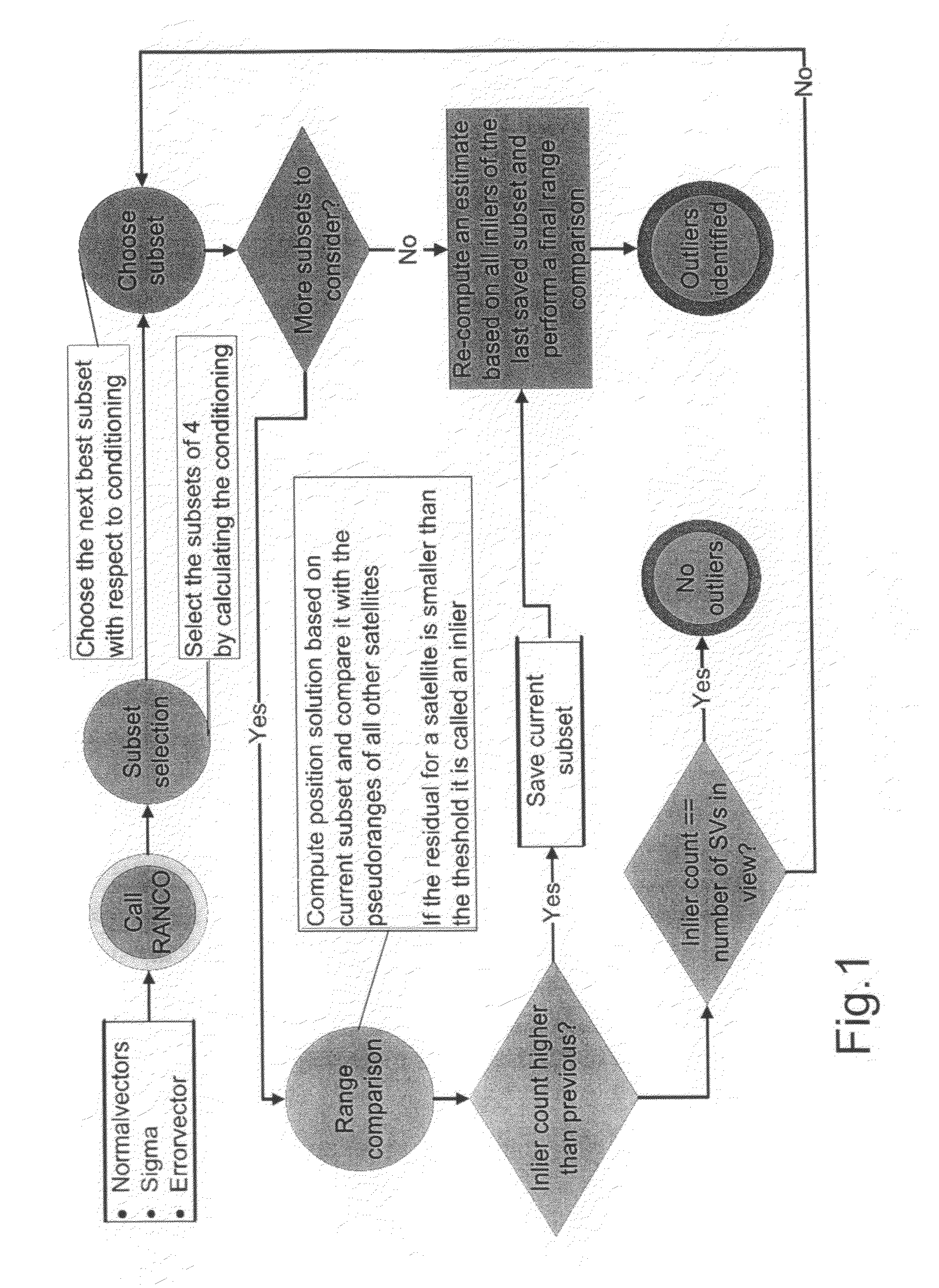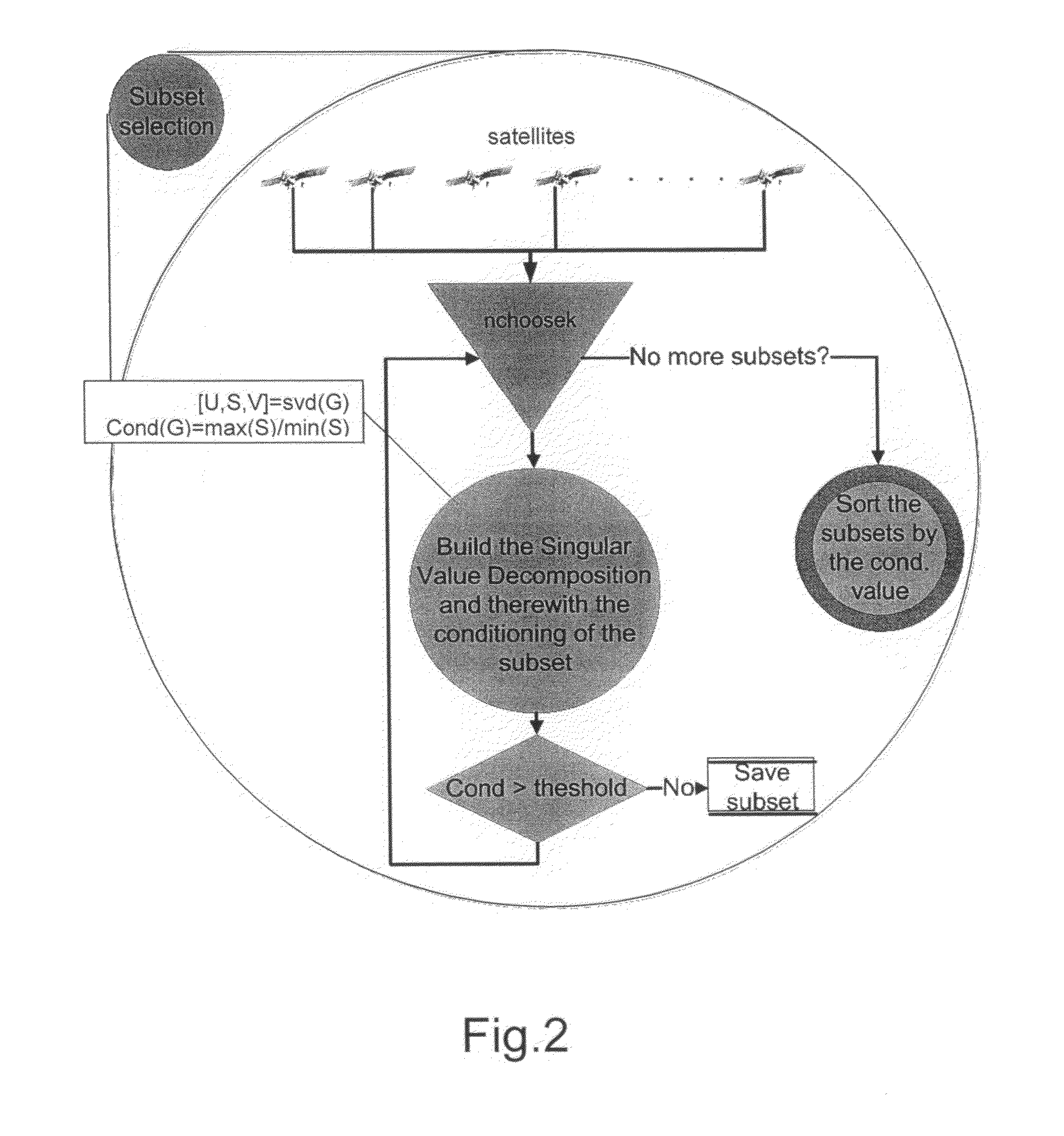Method of operating a satellite navigation receiver
a satellite navigation and receiver technology, applied in the field of satellite navigation receiver operation, to achieve the effect of high correlation value, significant improvement of performance, and sensitive to errors
- Summary
- Abstract
- Description
- Claims
- Application Information
AI Technical Summary
Benefits of technology
Problems solved by technology
Method used
Image
Examples
Embodiment Construction
[0049]The new procedure according to the present disclosure, called RANCO, is capable of detecting and identifying all (number of satellites in view minus necessary number of satellites for the position estimation (i.e. four) minus at least one additional satellite) navigation satellite signals with a range bias higher than a given threshold. This paves the way for safety critical and mass-market applications by allowing reliable and accurate estimations of position, velocity, and time at the receiver even during erroneous satellite constellations.
[0050]Further on, by excluding faulty satellite signals at low biases not only the integrity but also the precision of the estimations can significantly be improved. With a good estimate of the current ranging bias of each individual satellite, it is possible to reduce also multipath effects by eliminating the common bias.
[0051]In contrast to known approaches, the new procedure does not compute an estimation of position based on all satell...
PUM
 Login to View More
Login to View More Abstract
Description
Claims
Application Information
 Login to View More
Login to View More - R&D
- Intellectual Property
- Life Sciences
- Materials
- Tech Scout
- Unparalleled Data Quality
- Higher Quality Content
- 60% Fewer Hallucinations
Browse by: Latest US Patents, China's latest patents, Technical Efficacy Thesaurus, Application Domain, Technology Topic, Popular Technical Reports.
© 2025 PatSnap. All rights reserved.Legal|Privacy policy|Modern Slavery Act Transparency Statement|Sitemap|About US| Contact US: help@patsnap.com



